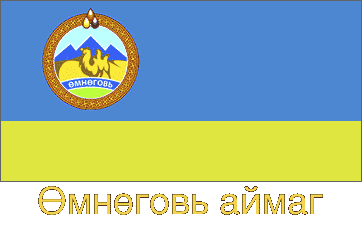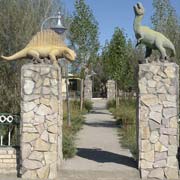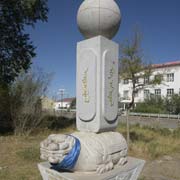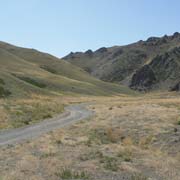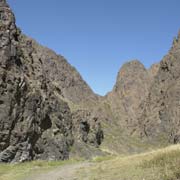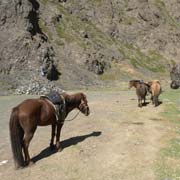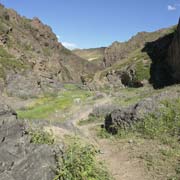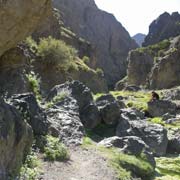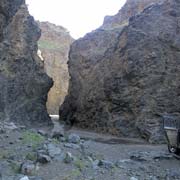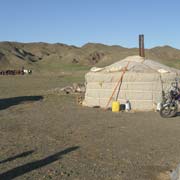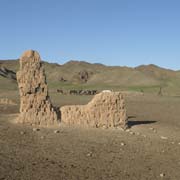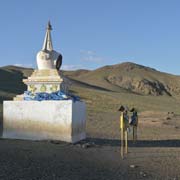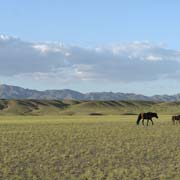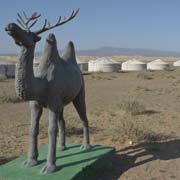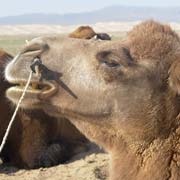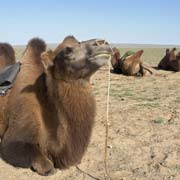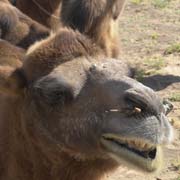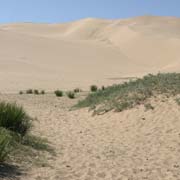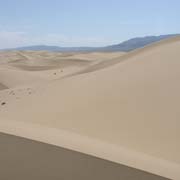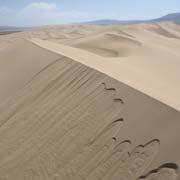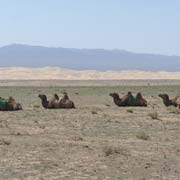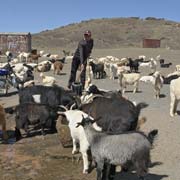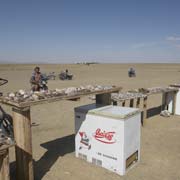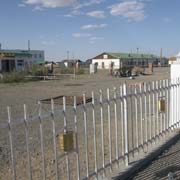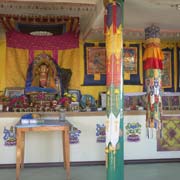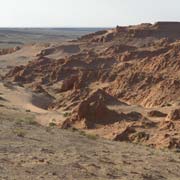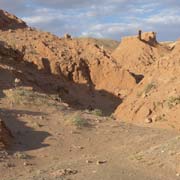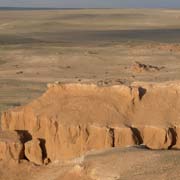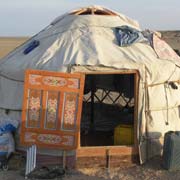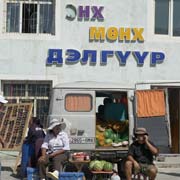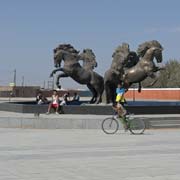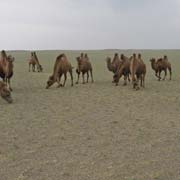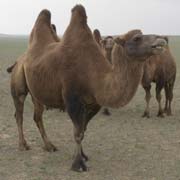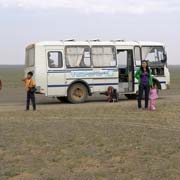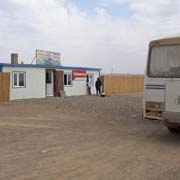Photos of Ömnögovi Province, Mongolia
Ömnögovi Province
Ömnögovi (= South Gobi) aimag is the southernmost province of Mongolia. It is Mongolia’s largest aimag, with 165,380 km²; it has only around 50,000 inhabitants. It is a real desert country; the average summer temperature is 38°C; in the winter, it can go down to -34°C, and precipitation is only 130 mm per year. But the province is rich in mineral deposits, including gold and copper; massive mines are digging it all out.
you may then send it as a postcard if you wish.
The province’s capital is Dalanzadgad, a small town with a park running through its centre, displaying sculptures of dinosaurs on the gate posts: South Gobi is famous for the dinosaur fossil finds made here. There is a market and a new area with a stadium and a fountain with large horse sculptures.
But the most outstanding views have to be reached by jeep; there is the Gobi Gurvan Saikhan (Three Beauties) National Park with Yolyn Am (Vulture’s Mouth), a narrow canyon where ice and snow remain frozen until the end of July. Khongoryn Els, about 160 kilometres west of Dalanzadgad, has the most spectacular sand dunes in Mongolia: up to 300 metres high, 12 kilometres wide, and about 100 kilometres long; they are known as Duut Mankhan - “Singing Dunes”, from the sound when the sand is moved by the wind or collapses in small avalanches. There is a ger camp here, and camels await tourists. About 95 kilometres north-west of Dalanzadgad is the bleak village of Bulgan, and nearby is the desert landscape of rock, sand and scrub at Bayanzag (meaning “rich in saxaul shrubs”), also known as the “Flaming Cliffs”. It is renowned as a rich source of dinosaur bones and eggs, first excavated in 1922 and where Protoceratops fossils and a cluster of eggs were found.
